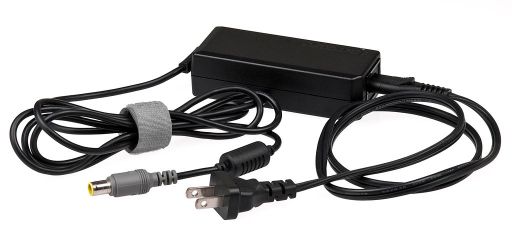This post is a guide to common computer cable connections. We will identify and describe common uses for each of the connectors pictured.
Connectors allow devices to receive power and communicate with each other. Therefore, there are many types of connectors, with many purposes.
Each connector plug needs a corresponding port to plug into. Images of both sides of the connection will be presented below.
USB
USB is the most common type of computer cable connections, although there are several styles of USB. The standard USB type A connection has long been the most popular way to plug a device into a computer. The other end of the cable might be another type of connector.
USB connectors have a letter or name that designates their shape, and might also have a number which designates the speed of data transfer. 2.0 is a slower, older standard than 3.0. But a Type A plug will fit into any Type A port.
USB C is a newer and faster connection than USB Type A, and is being incorporated into more computers, phones and tablets.
There is a specialized USB C, called a Thunderbolt connector. Here is a description from HP. USB C ports and plugs are compatible with Thunderbolt ports and plugs.
Thunderbolt plugs that are connected to Thunderbolt ports allow data transfer that is twice as fast as with USB C.
Micro and Mini USB are common for Android phones and tablets, including Kindle E-readers.
Type B is mostly used for printers.
The image below shows many of the USB connectors.

This mediaDarx~commonswikiOriginal workBruno Duyé, CC BY-SA 3.0 http://creativecommons.org/licenses/by-sa/3.0/, via Wikimedia Commons
USB 2.0 is generally older and will transfer data slower, 3.0 is newer and generally faster.
You can also buy adapters to make USB cables compatible, for example USB A to USB C.
Apple Lightning Cables
A Lightning cable is unique to Apple devices such as iPhones and iPads, but is increasingly being replaced with USB C. This is even true with new Lightning cables which have a USB C connection to the power brick.

Macbook Chargers
A Macbook USB-C/Thunderbolt charger will look like this. USB-C hubs are available with additional USB slots to plug additional devices or other types of cables into the laptop.

Network Connectivity Cables
Here we will cover the basic cables you receive when you or the internet technician sets up a modem/router.
The main 3 cables you will see are Coaxial Cables, Ethernet Cables, and Telephone Cables.
Coaxial Cables
Coaxial cables are used for the transmission of data, video, and voice communication. They typically look like the image below.
Ethernet Cables
Ethernet cables are used to provide the internet connection from your router to whatever device you plug it into.
Alternatively, most people use WiFi for a wireless connection.
Though WiFi is convenient you will get much faster speeds if you plug directly into your router with an Ethernet cable. If you need to download a big file fast it is a good idea to plug your device directly into the router.

Ethernet cables are distinguished using the term “Cat” which stands for category and then a number.
Cat 1 being the slowest
Cat 8 is currently the fastest.
With the internet speeds offered to us as consumers these days, you would want to get at the very least a Cat 5 cable.
Telephone Cables
Telephone Cables (RJ-11 and RJ45 Cables) are used to connect any form of phone service you have tied in through your ISP.

Keep in mind though they may look similar Ethernet and Phone cables are different and usually much smaller.
Power Cables
Here we will cover various types of power cables for Laptops and Desktops.
Laptop Power Cables
Laptop power cables will typically have a large power brick or AC/DC adapter attached to them.
Chargers for windows laptops will often look like this:

Mac laptops will typically will have chargers that look like these:

Display Cables
Display Cables are used to connect the computer to an external display source such as a monitor or a TV
This will almost always been done with one of the 4 cables shown below:

D-Kuru, CC BY-SA 3.0 AT https://creativecommons.org/licenses/by-sa/3.0/at/deed.en, via Wikimedia Commons
Evan-Amos, Public domain, via Wikimedia Commons
Evan-Amos, Public domain, via Wikimedia Commons
DPI (Display Port) and HDMI (High-Definition Multimedia Interface) are the most commonly with modern hardware.
You can also get adapters to make a cable compatible with a device that is missing the right input. DVI to HDMI and DPI to HDMI are examples.
DVI (Digital Visual Interface) and VGA (Video Graphics Array) are older and less used but can still provide 1080p HD quality though.
VGA is much older and won’t be found unless your hardware is very old; created in 1987 to put that into perspective.
While on the subject of old cables, you may also find an RCA cable in your home. These are old cables that carry audio and video signals.

Additionally, If you would like help with this process, just call or email and we’ll be happy to assist you! If you have specific questions, or if our terminology isn’t clear, please use our contact form to send us a message. Thank you!

